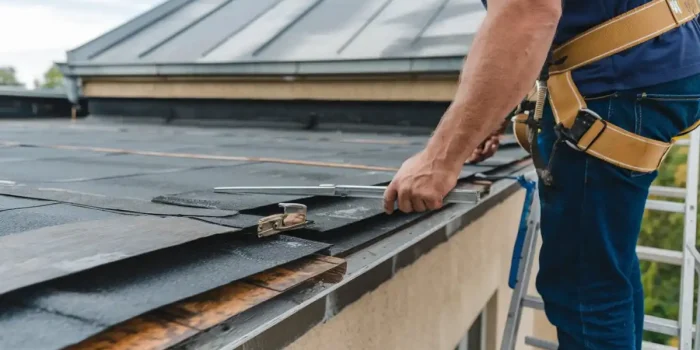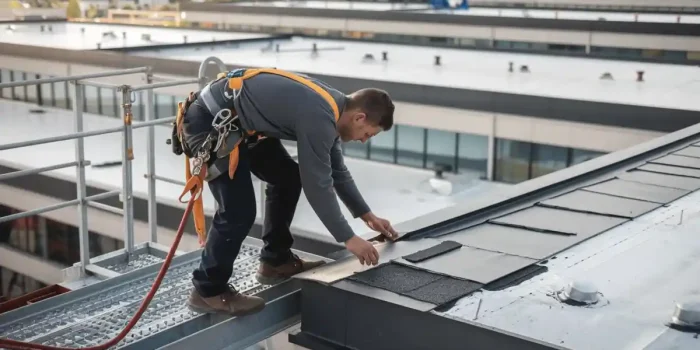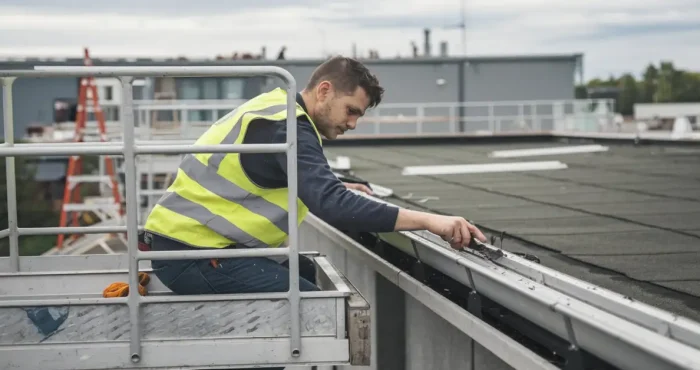Complete Flat Roof Maintenance Checklist: Essential Tasks for Every Season
Maintaining a flat roof isn’t just about fixing problems when they arise – it’s about preventing them entirely. As property owners in Houston know all too well, our weather can be particularly harsh on roofing systems. That’s why having a structured approach to flat roof maintenance throughout the year can save you thousands of dollars in emergency repairs and extend your roof’s lifespan significantly.
Whether you’re managing a commercial building or own a residential property with a flat roof, understanding what needs to be done each season will help you stay ahead of potential issues. Let’s walk through a comprehensive maintenance schedule that will keep your roof in peak condition year-round.
Why Seasonal Flat Roof Maintenance Matters
Before diving into specific tasks, it’s important to understand why seasonal maintenance is crucial. Flat roofs face unique challenges that sloped roofs don’t encounter. Water tends to pool rather than drain quickly, debris accumulates more easily, and temperature fluctuations can cause significant expansion and contraction of roofing materials.
Moreover, each season brings its own set of challenges. Spring often reveals winter damage, summer’s intense heat can cause membrane deterioration, fall brings falling leaves and debris, and winter can lead to ice damming and freeze-thaw cycles. By addressing these seasonal concerns proactively, you’re essentially giving your roof the best chance to perform optimally.
Spring Flat Roof Maintenance Tasks
Spring is arguably the most critical time for roof inspections. After surviving winter’s harsh conditions, your roof needs a thorough evaluation to identify any damage that may have occurred during the colder months.

Comprehensive Roof Inspection
Start by examining the entire roof surface for cracks, blisters, or tears in the membrane. Look closely at seams and joints, as these areas are particularly vulnerable to winter damage. Pay special attention to areas around HVAC units, vents, and other roof penetrations where leaks commonly develop.
Check all drainage systems thoroughly. Clear gutters and downspouts of any debris that accumulated over winter. Inspect drain covers and ensure they’re securely in place. Standing water is one of the biggest enemies of flat roofs, so proper drainage is essential.
Cleaning and Debris Removal
Remove all debris that has accumulated over the winter months. This includes leaves, branches, and any other organic matter that could retain moisture and lead to membrane deterioration. Use a soft-bristled broom or leaf blower to avoid damaging the roof surface.
Additionally, trim any overhanging branches that could fall on your roof during spring storms. Prevention is always more cost-effective than repairs.
Summer Maintenance for Your Flat Roof System
Summer presents its own unique challenges for flat roofs. The intense heat and UV radiation can cause significant stress on roofing materials, making this season crucial for protective maintenance.

Heat and UV Protection Assessment
Inspect your roof’s protective coating or membrane for signs of UV damage, such as cracking, chalking, or general deterioration. If you notice these signs, consider applying a reflective coating to protect against further damage and improve energy efficiency.
Check for thermal shock damage, which occurs when roofing materials rapidly expand and contract due to temperature changes. This is particularly common in areas that receive direct sunlight during the day but cool rapidly at night.
Cooling System Maintenance
Summer is the perfect time to ensure your HVAC systems aren’t putting unnecessary stress on your roof. Check that all HVAC units are properly secured and that their weight is evenly distributed. Inspect the area around these units for signs of membrane damage or excessive wear.
Furthermore, ensure adequate ventilation to prevent heat buildup, which can accelerate membrane aging and increase cooling costs.
Essential Fall Preparation Tasks
Fall maintenance focuses primarily on preparing your roof for winter while addressing issues that summer’s heat may have caused. This season is your last opportunity to address problems before harsh winter weather arrives.
Leaf and Debris Management
The most obvious fall task is removing fallen leaves and other debris. However, it’s not just about aesthetics – accumulated organic matter retains moisture and can lead to membrane deterioration and even pest problems.
Clean out gutters and downspouts regularly throughout fall, as they can quickly become clogged with leaves. Consider installing gutter guards if leaf accumulation is a persistent problem.
Weatherproofing and Sealant Inspection
Inspect all sealants and caulking around roof penetrations, edges, and joints. Cold weather can cause these materials to become brittle and crack, so replacing them in fall ensures better winter protection.
Check flashing around chimneys, vents, and other roof penetrations. Loose or damaged flashing is a common source of winter leaks, so address any issues before cold weather arrives.
Winter Flat Roof Care Strategies
While winter maintenance is often limited due to weather conditions, there are still important tasks that shouldn’t be overlooked. Winter maintenance focuses primarily on monitoring and addressing immediate concerns.
Snow and Ice Management
Keep an eye on snow accumulation, as flat roofs can only support a certain amount of weight. Generally, most flat roofs can safely support up to 20 pounds per square foot, but this varies based on your roof’s design and age.
Remove snow carefully using a roof rake or hire professionals if accumulation becomes excessive. Never use sharp tools or chemicals that could damage your roof membrane.
Indoor Monitoring
Since you can’t always safely access your roof during winter, monitor your building’s interior for signs of leaks. Check ceilings, walls, and attic spaces for water stains, mold growth, or other indicators of roof problems.
Document any issues you discover, as this information will be valuable when conducting your spring inspection or when you need to get a free flat roof repair estimate from professionals.
Professional Maintenance Considerations
While many maintenance tasks can be performed by property owners, some situations require professional expertise. Complex repairs, membrane replacement, and structural issues should always be handled by qualified roofing contractors.
Consider scheduling annual professional inspections, even if you perform regular maintenance yourself. Professional roofers can identify potential problems that untrained eyes might miss, potentially saving you from costly emergency repairs.

Conclusion: Protecting Your Investment
Implementing a seasonal flat roof maintenance routine is one of the best investments you can make in your property. Regular maintenance not only prevents costly repairs but also extends your roof’s lifespan and maintains your building’s value.
Consistency is key. A roof that receives regular attention throughout the year will significantly outperform one that’s only addressed when problems arise. By following this comprehensive maintenance checklist, you’re taking proactive steps to protect your property and ensure your flat roof serves you well for years to come.
Don’t wait until problems develop – start implementing these seasonal maintenance practices today, and your roof will thank you with years of reliable performance.
